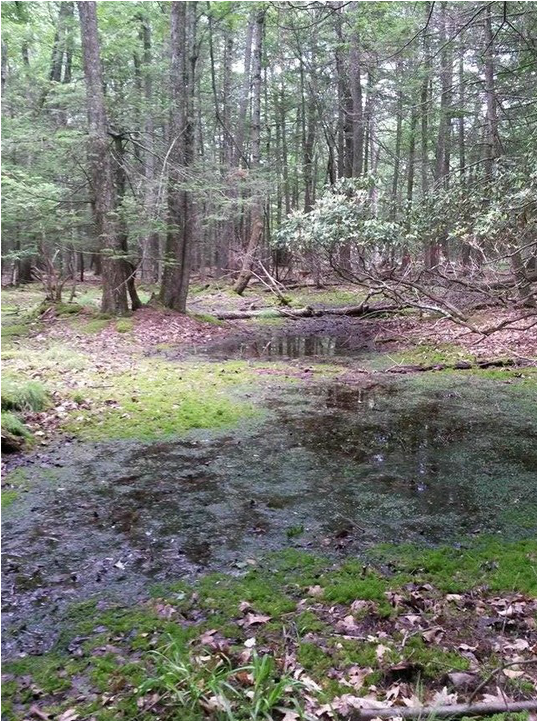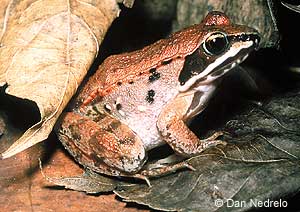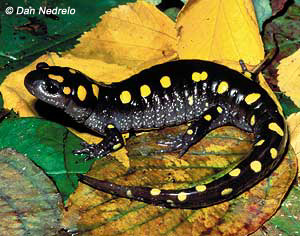Vernal Pools
|
|
According to the EPA, “Vernal pools are seasonal depressional wetlands that occur under the Mediterranean climate conditions of the west coast and in glaciated areas of northeastern and midwestern states.”
The word “Vernal” refers to the spring. Vernal pools are caused by snowmelt and spring rain. They reach their maximum water depth in the spring, thus the name "Vernal Pools". Since vernal pools dry up by winter, they do not have the ability to support fish. They provide a safe habitat for many species that would normally be eaten by fish. Therefore, vernal pools are used as a nursery for amphibians, reptiles, and insects. If you look closely, you may be able to spot eggs in the water. Common species that reside in Vernal Pools are |
Click one of the links below to learn about more about the kinds of animals you might spot in a vernal pool.
|
Facts about the spotted salamander (Ambystoma maculatum)
|
Facts about the Wood Frog (Lithobates sylvaticus)
|


